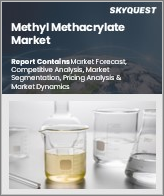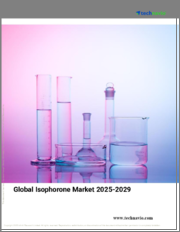
|
시장보고서
상품코드
1662782
아세톤 시장 예측( -2030년) : 제품 유형별, 생산 공정별, 용도별, 최종사용자별, 지역별 세계 분석Acetone Market Forecasts to 2030 - Global Analysis By Type (Conventional Petrochemical-Based Acetone, Bio-Based Acetone and Other Types), Production Process, Application, End User and By Geography |
||||||
Stratistics MRC에 따르면 아세톤 세계 시장은 2024년에 68억 4,000만 달러로 2030년에는 118억 5,000만 달러에 달할 것으로 예상되며 예측 기간 동안 9.9%의 CAGR을 기록할 것으로 예측됩니다. 아세톤은 무색, 휘발성, 가연성 액체로 냄새가 강하고 일반적으로 용매로 사용됩니다. 화학식은 C3H6O로 가장 간단한 케톤입니다. 또한 매니큐어 제광액의 주성분이기도 합니다. 아세톤은 대사 산물로서 인체에 자연적으로 존재합니다. 아세톤은 세척, 페인트 희석, 다른 물질의 용해에 널리 이용되고 있습니다.
ITC Trademap에 따르면 2020년 중국의 아세톤 수입량은 전년 대비 9.2% 증가, 수출량은 200톤 이상입니다. 중국은 아세톤의 순 수입국이며 총 수입량은 70만 7,170톤입니다.
매니큐어와 페디큐어 서비스의 인기 상승
아세톤은 매니큐어용 제광액의 주성분으로 이러한 미용 치료에 널리 사용되고 있습니다. 전 세계적으로 네일 케어 및 미용실 서비스에 대한 수요가 증가함에 따라 아세톤 소비량이 증가하고 있으며, 특히 미용 및 미용 트리트먼트를 원하는 소비자들 사이에서 아세톤 소비가 증가하고 있습니다. 집에서 네일 케어를 포함하여 매니큐어와 페디큐어를 자주 하는 추세도 아세톤 제품의 필요성을 높이고 있으며, 이는 퍼스널케어 및 화장품 산업에서 아세톤 시장을 주도하고 있습니다.
엄격한 환경법 규제
아세톤은 휘발성 유기화합물(VOC)로 분류되어 대기 오염을 최소화하고 인체 건강을 보호하기 위해 생산 및 사용에 대한 엄격한 가이드라인이 적용됩니다. 이러한 규제는 제조업체의 비용 증가로 이어질 수 있으며, 제조업체는 배출을 통제하고 표준을 준수하기 위해 첨단 기술에 투자해야 할 수도 있습니다. 또한, 규제 강화로 인해 아세톤 생산이 제한되어 시장 성장이 둔화되고 공급 부족이 발생할 수 있습니다.
확장하는 제약 부문
아세톤은 의약품 제조의 용매로 작용하여 다양한 의약품과 백신의 효과적인 제조를 보장합니다. 또한, 아세톤은 제약 시설에서 기기의 세척 및 멸균에 필수적인 역할을 합니다. 신약 개발 및 생산에 초점을 맞춘 의료 수요의 증가는 이 부문의 아세톤 소비를 촉진하고 고품질 바이오 기반 아세톤 수요 증가에 대응하는 제조업체에게 성장 기회를 제공하고 있습니다.
원자재 가격 변동
아세톤의 원료 가격 변동은 주로 프로필렌 공급과 원유 가격 변동에 의해 발생합니다. 원료 가격이 상승하면 생산 비용이 상승하여 아세톤의 가격 경쟁력 및 시장 경쟁에 영향을 미칩니다. 이러한 예측 불가능성으로 인해 제조업체는 안정적인 가격 전략을 유지하기가 어려워져 공급망 혼란과 수익률 저하로 이어집니다. 그 결과, 아세톤 산업 전체의 발전을 저해하고 있습니다.
COVID-19의 영향
COVID-19 사태는 아세톤 시장에 큰 영향을 미쳐 공급망 혼란, 생산 중단, 산업 활동 감소를 초래했습니다. 가동 중단과 경기 침체로 인해 자동차, 섬유, 건설 등의 분야에서 수요가 감소했습니다. 그러나 제약 및 의료 산업에서는 소독제 및 의료용 아세톤 수요가 증가했습니다. 회복 노력에도 불구하고 아세톤 시장은 원료 부족과 노동력 단절이라는 도전에 직면하여 아세톤 수급의 가격 변동과 변동으로 이어졌습니다.
예측 기간 동안 큐멘 프로세스 부문이 가장 클 것으로 예상됩니다.
예측 기간 동안 큐멘 공정 부문이 가장 큰 시장 점유율을 차지할 것으로 예상됩니다. 큐멘 공정은 벤젠을 프로필렌으로 알킬화하여 큐멘(이소프로필벤젠)을 형성하는 아세톤 생산의 주요 방법입니다. 이 공정은 매우 효율적이며, 아세톤뿐만 아니라 귀중한 제품인 페놀도 생산하기 때문에 산업에서 널리 사용되고 있습니다. 큐멘 공정은 전 세계적으로 대규모 아세톤 생산에 중요한 역할을 하고 있습니다.
예측 기간 동안 화학 산업 부문은 가장 높은 CAGR을 보일 것으로 예상됩니다.
예측 기간 동안 화학 산업 부문은 가장 높은 성장률을 보일 것으로 예상됩니다. 아세톤은 화학 산업에서 주요 용매이며 세척, 탈지 및 다양한 화학 공정에서 캐리어로 널리 사용됩니다. 아세톤은 다양한 물질을 용해하는 능력이 있기 때문에 페인트, 코팅제, 접착제, 플라스틱의 용매로 사용됩니다. 또한, 정제 및 추출 공정에서의 효과로 인해 의약품 제조 및 실험실 용도로도 사용되고 있습니다.
가장 큰 점유율을 차지하는 지역
예측 기간 동안 아시아태평양은 중국, 인도, 일본, 한국 등의 국가들의 견조한 산업 성장에 힘입어 가장 큰 시장 점유율을 차지할 것으로 예상됩니다. 아세톤의 수요는 자동차, 제약, 화장품, 페인트 및 코팅제 등의 최종사용자 산업에서 아세톤의 사용 증가에 의해 촉진되고 있습니다. 이 지역에서는 특히 화학 및 플라스틱 제조 기반이 확대되고 있으며, 용매 및 원료로서 아세톤의 필요성이 증가하고 있습니다. 또한, 소비재 생산의 증가와 호황을 누리고 있는 의료 부문이 시장 확대에 더욱 기여하고 있습니다.
CAGR이 가장 높은 지역
예측 기간 동안 북미가 가장 높은 CAGR을 보일 것으로 예상되며, 자동차, 제약, 화장품, 페인트 산업 등의 활발한 수요로 인해 북미가 가장 높은 CAGR을 기록할 것으로 예상됩니다. 미국과 캐나다는 아세톤의 주요 소비국이며, 아세톤은 용제, 접착제, 세정제 생산에 필수적입니다. 이 지역의 잘 구축된 제조 인프라는 산업 활동의 증가와 함께 아세톤 수요를 뒷받침하고 있습니다. 또한, 제약 부문의 성장과 퍼스널케어 제품에서 아세톤의 사용 증가는 북미 시장 확대를 지속적으로 촉진하고 있습니다.
무료 커스터마이징 서비스
본 보고서를 구독하는 고객은 다음과 같은 무료 커스터마이징 옵션 중 하나를 선택할 수 있습니다.
- 기업 소개
- 추가 시장 진입 기업의 종합적인 프로파일링(최대 3개사까지)
- 주요 기업 SWOT 분석(3개사까지)
- 지역 세분화
- 고객의 관심에 따른 주요 국가별 시장 추정 및 예측, CAGR(주: 타당성 검토에 따른)
- 경쟁사 벤치마킹
- 제품 포트폴리오, 지리적 입지, 전략적 제휴를 통한 주요 기업 벤치마킹
목차
제1장 주요 요약
제2장 서문
- 개요
- 이해관계자
- 조사 범위
- 조사 방법
- 데이터 마이닝
- 데이터 분석
- 데이터 검증
- 조사 접근법
- 조사 정보 출처
- 1차 조사 정보 출처
- 2차 조사 정보 출처
- 가정
제3장 시장 동향 분석
- 소개
- 성장 촉진요인
- 성장 억제요인
- 기회
- 위협
- 용도 분석
- 최종사용자 분석
- 신흥 시장
- COVID-19의 영향
제4장 Porter's Five Forces 분석
- 공급 기업의 교섭력
- 구매자의 교섭력
- 대체품의 위협
- 신규 참여업체의 위협
- 경쟁 기업 간의 경쟁 관계
제5장 세계의 아세톤 시장 : 유형별
- 소개
- 기존 석유화학계 아세톤
- 바이오 기반 아세톤
- 기타
제6장 세계의 아세톤 시장 : 생산 공정별
- 소개
- 쿠멘 공정
- 바커-호에스트 공정
- 프로필렌 수화
- 이소프로필 알코올 산화
- 하이드로퍼옥사이드 공정
- 기타
제7장 세계의 아세톤 시장 : 용도별
- 소개
- 용제
- 메틸 메타크릴레이트(MMA) 제조
- 비스페놀 A(BPA) 생산
- 약제 배합
- 기타
제8장 세계의 아세톤 시장 : 최종사용자별
- 소개
- 화학 산업
- 의료
- 자동차
- 페인트와 코팅
- 화장품·퍼스널케어
- 섬유 산업
- 전자·전기
- 기타
제9장 세계의 아세톤 시장 : 지역별
- 소개
- 북미
- 미국
- 캐나다
- 멕시코
- 유럽
- 독일
- 영국
- 이탈리아
- 프랑스
- 스페인
- 기타 유럽
- 아시아태평양
- 일본
- 중국
- 인도
- 호주
- 뉴질랜드
- 한국
- 기타 아시아태평양
- 남미
- 아르헨티나
- 브라질
- 칠레
- 기타 남미
- 중동 및 아프리카
- 사우디아라비아
- 아랍에미리트
- 카타르
- 남아프리카공화국
- 기타 중동 및 아프리카
제10장 주요 개발
- 계약, 파트너십, 협업, 합작투자
- 인수와 합병
- 신제품 발매
- 사업 확대
- 기타 주요 전략
제11장 기업 개요
- Shell plc
- Honeywell International Inc.
- Mitsui Chemicals, Inc.
- SABIC
- Arkema
- Solvay
- BASF SE
- The Dow Chemical Company
- LyondellBasell Industries
- LG Chem
- Reliance Industries Limited
- Celanese Corporation
- Perstorp Group
- Radici Group
- DOMO Chemicals
- Kumho P&B Chemicals
- Formosa Chemicals and Fibre Corporation
- Borealis AG
According to Stratistics MRC, the Global Acetone Market is accounted for $6.84 billion in 2024 and is expected to reach $11.85 billion by 2030 growing at a CAGR of 9.9% during the forecast period. Acetone is a colourless, volatile, flammable liquid with a strong odour, commonly used as a solvent. Its chemical formula is C3H6O, and it is the simplest ketone. It is also a key ingredient in nail polish remover. Acetone naturally occurs in the human body as a byproduct of metabolism. Acetone is widely utilized for cleaning, thinning paints, and dissolving other substances.
According to ITC Trademap, in 2020, China's imports acetone by 9.2% Y-o-Y, whereas exports were more than 200 tons. China is a net importer of acetone, with a total imported value of 707.17 thousand tons.
Market Dynamics:
Driver:
Rising popularity of manicure and pedicure service
Acetone is a key ingredient in nail polish removers, which are widely used in these beauty treatments. As the demand for nail care and salon services grows globally, particularly among consumers seeking personal grooming and beauty treatments, acetone consumption increases. The trend towards frequent manicures and pedicures, including at-home nail care, also propels the need for acetone products, thus driving the market for acetone in the personal care and cosmetic industry.
Restraint:
Stringent environmental laws and regulations
Acetone is classified as a VOC, and its production and usage are subject to strict guidelines to minimize air pollution and safeguard human health. These regulations can result in increased costs for manufacturers, who may need to invest in advanced technologies to control emissions and comply with standards. Additionally, tighter restrictions can limit acetone production, slowing market growth and leading to potential supply shortages.
Opportunity:
Expanding pharmaceutical sector
Acetone serves as a solvent in pharmaceutical production, ensuring the effective manufacturing of various drugs and vaccines. Moreover, acetone is vital for cleaning equipment and sterilizing tools in pharmaceutical facilities. The rise in healthcare demand, along with a focus on new drug development and production, propels acetone consumption in this sector, creating a growing opportunity for manufacturers to cater to the increasing demand for high-quality, bio-based acetone.
Threat:
Volatility of raw material prices
The volatility of raw material prices in acetone are primarily driven by fluctuations in propylene supply and crude oil prices. When raw material prices rise, production costs increase, affecting acetone's affordability and competitiveness in the market. This unpredictability makes it challenging for manufacturers to maintain stable pricing strategies, leading to supply chain disruptions and reduced profit margins. Consequently, impeding the overall development of the acetone industry.
Covid-19 Impact:
The covid-19 pandemic significantly impacted the acetone market, with disruptions in supply chains, production halts, and reduced industrial activity. Lockdowns and economic slowdowns led to a decline in demand from sectors like automotive, textiles, and construction. However, the pharmaceutical and healthcare industries saw increased demand for acetone in disinfectants and medical applications. Despite recovery efforts, the market faced challenges from raw material shortages and labour disruptions, leading to price volatility and fluctuations in acetone supply and demand.
The cumene process segment is expected to be the largest during the forecast period
The cumene process segment is expected to account for the largest market share during the forecast period. The Cumene process is a key method for producing acetone, involving the alkylation of benzene with propylene to form cumene (isopropylbenzene). This process is highly efficient and widely used in industry, as it not only produces acetone but also phenol, a valuable byproduct. The Cumene process plays a significant role in large-scale acetone production globally.
The chemical industry segment is expected to have the highest CAGR during the forecast period
Over the forecast period, the chemical industry segment is predicted to witness the highest growth rate. Acetone is a key solvent in the chemical industry, widely used for cleaning, degreasing, and as a carrier in various chemical processes. It serves as a solvent for paints, coatings, adhesives, and plastics due to its ability to dissolve a range of substances. Additionally, it is used in pharmaceutical manufacturing and laboratory applications for its effectiveness in purification and extraction processes.
Region with largest share:
During the forecast period, the Asia Pacific region is expected to hold the largest market share, driven by robust industrial growth in countries like China, India, Japan, and South Korea. The demand for acetone is fuelled by the increasing use in end-user industries such as automotive, pharmaceuticals, cosmetics, and paints and coatings. The region's growing manufacturing base, especially in chemicals and plastics, boosts the need for acetone as a solvent and raw material. Additionally, the rise in consumer goods production and a booming healthcare sector further contribute to market expansion.
Region with highest CAGR:
Over the forecast period, the North America region is anticipated to exhibit the highest CAGR, fuelled by strong demand from including automotive, pharmaceuticals, cosmetics, and paints industries. The U.S. and Canada are significant consumers of acetone, with the chemical being essential in the production of solvents, adhesives, and cleaning agents. The region's well-established manufacturing infrastructure, coupled with increasing industrial activities, supports acetone demand. Furthermore, the pharmaceutical sector's growth and the rising use of acetone in personal care products continue to drive market expansion in North America.
Key players in the market
Some of the key players in Acetone market include Shell plc, Honeywell International Inc., Mitsui Chemicals, Inc., SABIC, Arkema, Solvay, BASF SE, The Dow Chemical Company, LyondellBasell Industries, LG Chem, Reliance Industries Limited, Celanese Corporation, Perstorp Group, Radici Group, DOMO Chemicals, Kumho P&B Chemicals, Formosa Chemicals and Fibre Corporation and Borealis AG.
Key Developments:
In January 2025, Mitsui Chemicals commenced the sale of biomass-based acetone following the acquisition of ISCC PLUS certification. This certification enables the company to produce and market sustainable products derived from biomass materials under the mass balance system. These initiatives reflect Mitsui Chemicals' commitment to sustainability and the promotion of eco-friendly products in the chemical industry.
In July 2022, LG Chem announced that it has exported its first bio-balanced phenol and acetone, totaling 5,200 tons. This shipment included 4,000 tons of phenol and 1,200 tons of acetone, marking the largest volume of ISCC PLUS certified bio-balanced chemicals from the company. The export demonstrates LG Chem's commitment to sustainable practices, contributing to the growing demand for eco-friendly and renewable chemicals in various industries.
Types Covered:
- Conventional Petrochemical-Based Acetone
- Bio-Based Acetone
- Other Types
Production Processes Covered:
- Cumene Process
- Wacker-Hoechst Process
- Hydration of Propylene
- Oxidation of Isopropyl Alcohol
- Hydroperoxide Process
- Other Production Processes
Applications Covered:
- Solvents
- Methyl Methacrylate (MMA) Production
- Bisphenol-A (BPA) Production
- Drug Formulations
- Other Applications
End Users Covered:
- Chemical Industry
- Healthcare
- Automotive
- Paints & Coatings
- Cosmetics & Personal Care
- Textile Industry
- Electronics & Electrical
- Other End Users
Regions Covered:
- North America
- US
- Canada
- Mexico
- Europe
- Germany
- UK
- Italy
- France
- Spain
- Rest of Europe
- Asia Pacific
- Japan
- China
- India
- Australia
- New Zealand
- South Korea
- Rest of Asia Pacific
- South America
- Argentina
- Brazil
- Chile
- Rest of South America
- Middle East & Africa
- Saudi Arabia
- UAE
- Qatar
- South Africa
- Rest of Middle East & Africa
What our report offers:
- Market share assessments for the regional and country-level segments
- Strategic recommendations for the new entrants
- Covers Market data for the years 2022, 2023, 2024, 2026, and 2030
- Market Trends (Drivers, Constraints, Opportunities, Threats, Challenges, Investment Opportunities, and recommendations)
- Strategic recommendations in key business segments based on the market estimations
- Competitive landscaping mapping the key common trends
- Company profiling with detailed strategies, financials, and recent developments
- Supply chain trends mapping the latest technological advancements
Free Customization Offerings:
All the customers of this report will be entitled to receive one of the following free customization options:
- Company Profiling
- Comprehensive profiling of additional market players (up to 3)
- SWOT Analysis of key players (up to 3)
- Regional Segmentation
- Market estimations, Forecasts and CAGR of any prominent country as per the client's interest (Note: Depends on feasibility check)
- Competitive Benchmarking
- Benchmarking of key players based on product portfolio, geographical presence, and strategic alliances
Table of Contents
1 Executive Summary
2 Preface
- 2.1 Abstract
- 2.2 Stake Holders
- 2.3 Research Scope
- 2.4 Research Methodology
- 2.4.1 Data Mining
- 2.4.2 Data Analysis
- 2.4.3 Data Validation
- 2.4.4 Research Approach
- 2.5 Research Sources
- 2.5.1 Primary Research Sources
- 2.5.2 Secondary Research Sources
- 2.5.3 Assumptions
3 Market Trend Analysis
- 3.1 Introduction
- 3.2 Drivers
- 3.3 Restraints
- 3.4 Opportunities
- 3.5 Threats
- 3.6 Application Analysis
- 3.7 End User Analysis
- 3.8 Emerging Markets
- 3.9 Impact of Covid-19
4 Porters Five Force Analysis
- 4.1 Bargaining power of suppliers
- 4.2 Bargaining power of buyers
- 4.3 Threat of substitutes
- 4.4 Threat of new entrants
- 4.5 Competitive rivalry
5 Global Acetone Market, By Type
- 5.1 Introduction
- 5.2 Conventional Petrochemical-Based Acetone
- 5.3 Bio-Based Acetone
- 5.4 Other Types
6 Global Acetone Market, By Production Process
- 6.1 Introduction
- 6.2 Cumene Process
- 6.3 Wacker-Hoechst Process
- 6.4 Hydration of Propylene
- 6.5 Oxidation of Isopropyl Alcohol
- 6.6 Hydroperoxide Process
- 6.7 Other Production Processes
7 Global Acetone Market, By Application
- 7.1 Introduction
- 7.2 Solvents
- 7.3 Methyl Methacrylate (MMA) Production
- 7.4 Bisphenol-A (BPA) Production
- 7.5 Drug Formulations
- 7.6 Other Applications
8 Global Acetone Market, By End User
- 8.1 Introduction
- 8.2 Chemical Industry
- 8.3 Healthcare
- 8.4 Automotive
- 8.5 Paints & Coatings
- 8.6 Cosmetics & Personal Care
- 8.7 Textile Industry
- 8.8 Electronics & Electrical
- 8.9 Other End Users
9 Global Acetone Market, By Geography
- 9.1 Introduction
- 9.2 North America
- 9.2.1 US
- 9.2.2 Canada
- 9.2.3 Mexico
- 9.3 Europe
- 9.3.1 Germany
- 9.3.2 UK
- 9.3.3 Italy
- 9.3.4 France
- 9.3.5 Spain
- 9.3.9 Rest of Europe
- 9.4 Asia Pacific
- 9.4.1 Japan
- 9.4.2 China
- 9.4.3 India
- 9.4.4 Australia
- 9.4.5 New Zealand
- 9.4.9 South Korea
- 9.4.7 Rest of Asia Pacific
- 9.5 South America
- 9.5.1 Argentina
- 9.5.2 Brazil
- 9.5.3 Chile
- 9.5.4 Rest of South America
- 9.9 Middle East & Africa
- 9.9.1 Saudi Arabia
- 9.9.2 UAE
- 9.9.3 Qatar
- 9.9.4 South Africa
- 9.9.5 Rest of Middle East & Africa
10 Key Developments
- 10.1 Agreements, Partnerships, Collaborations and Joint Ventures
- 10.2 Acquisitions & Mergers
- 10.3 New Product Launch
- 10.4 Expansions
- 10.5 Other Key Strategies
11 Company Profiling
- 11.1 Shell plc
- 11.2 Honeywell International Inc.
- 11.3 Mitsui Chemicals, Inc.
- 11.4 SABIC
- 11.5 Arkema
- 11.6 Solvay
- 11.7 BASF SE
- 11.8 The Dow Chemical Company
- 11.9 LyondellBasell Industries
- 11.10 LG Chem
- 11.11 Reliance Industries Limited
- 11.12 Celanese Corporation
- 11.13 Perstorp Group
- 11.14 Radici Group
- 11.15 DOMO Chemicals
- 11.16 Kumho P&B Chemicals
- 11.17 Formosa Chemicals and Fibre Corporation
- 11.18 Borealis AG



















